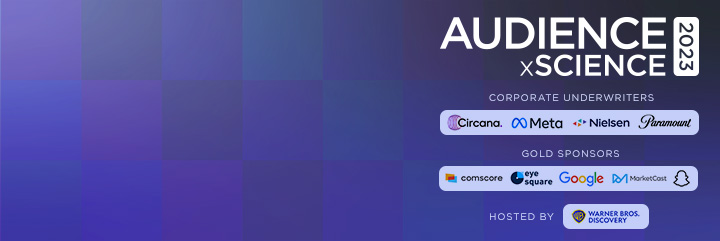- Past Event Highlights
- Article
In-Home Psychophysiological Television Measurement
Pedro Alemida – CEO, MindProber
Lauren Zweifler – SVP Insights & Research, Client Strategy & Insights Org, NBCU
How to measure attention? This presentation introduced MindProber—a tool that includes biometrics, physiology, conscious/dial AND survey methods to assess attention. MindProber measurement is passive—second by second emotional engagement is measured through electrodermal activity (EDA), aka galvanic skin response (GSR) and also active—measures cognitive response via an optional feature to indicate like/dislike content through app. N= 1,500 and growing to 3,000 by end of year. Pedro Almeida (MindProber) emphasized three indicators of the value of metrics: 1. Validity—measures what it is supposed to measure. GSR is linearly related to perceived arousal in video formats. Measures emotional intensity (example of soccer game and spikes during key moments such as goals). 2. Reliability—metrics are stable across samples with 98.3% accuracy in ranking high vs. low impact ads. 3. Predictive power—metrics predict events of interest. Carry-over—if you’re more involved with the content you will respond more to ads. Premium content leads to higher advertising impact. Engagement with contents will carry over to engagement with ads. Emotional impact is indicator of likelihood of remembering the brand. Generating macro insights through a robust taxonomy—analyzed 150+ sessions, watched 250+ hours of programming, monitored 20,000+ individual hours, 10,000+ individual participations, 22,700+ events tagged and 8,500+ ads. Ninety-eight percent of commercial activity is as engaging as the content. Findings show 1. validity exists. 2. Reliability—98.3% accuracy in ranking high vs. low impact ads. 3. Predictive validity: A) Higher emotional impact for content = higher emotional impact for advertising. Carry-over—premium content leads to higher advertising impact; B) Higher emotional impact score = higher brand recall. Emotional impact is an indicator of likelihood of remembering the brand. Lauren Zweifler (NBCU) showed that MindProber successfully identified the most crucial moments on both scripted and unscripted shows (Iconic holiday TV moments for the first and Top Chef and America’s Next Top Model for the latter) WITH validity, reliability and predictability. What’s next?
- How can we best predict lower funnel outcomes?
- What elements of creative really matter?
- How do we optimize for CTV?
Key Takeaways
- New tool that captures emotional engagement through skin response.
- Three fundamental metrics are validity, reliability and predictability.
- Generated macro insights through a robust taxonomy. Power of premium video content yield strong emotional engagement (EE).






